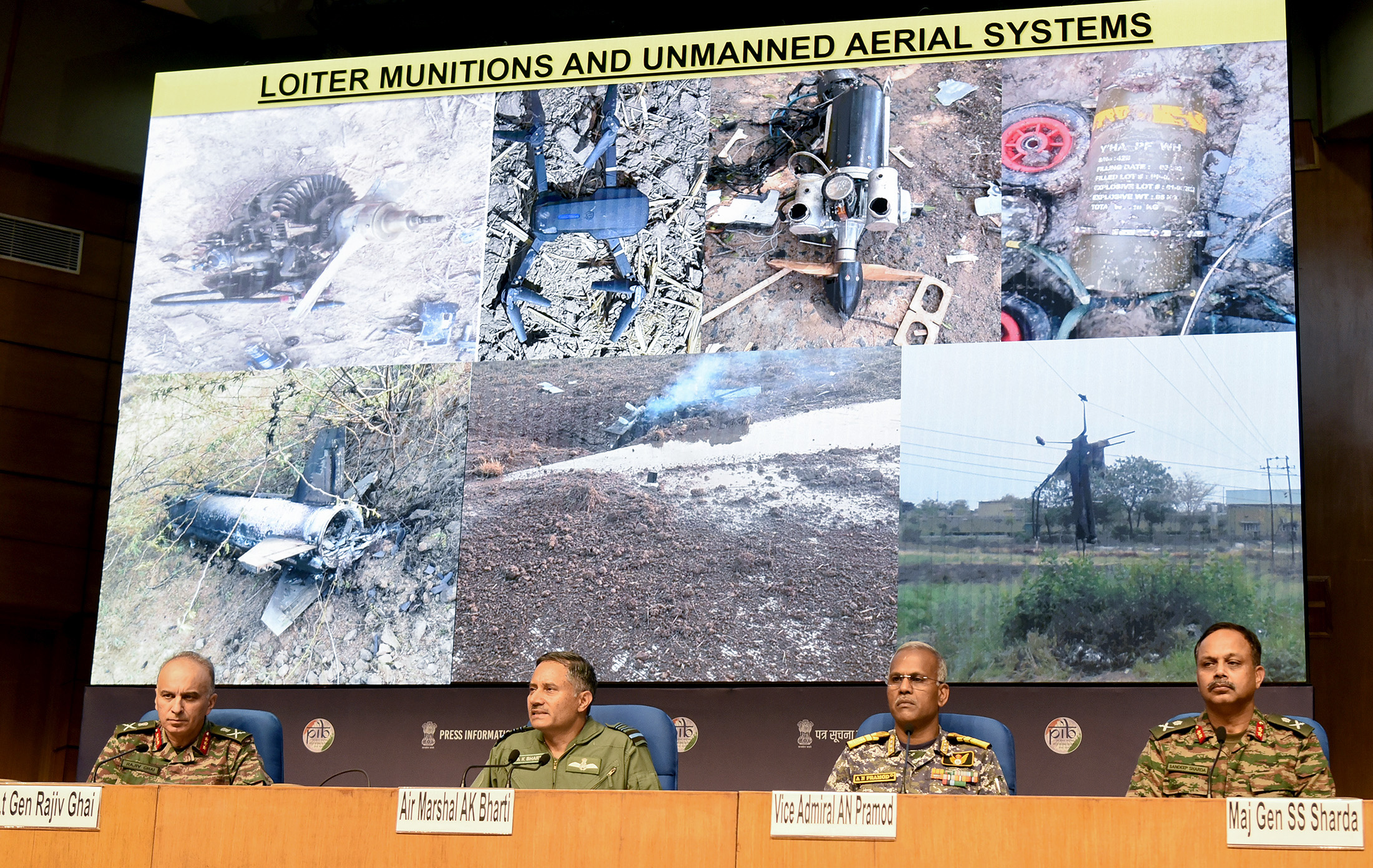In the annals of India’s military history, Operation SINDOOR stands as a defining moment—a meticulously executed response to asymmetric warfare that underscores the nation’s stride towards technological self-reliance. Initiated in the wake of the tragic terrorist attack on civilians in Pahalgam in April 2025, this operation not only neutralized immediate threats but also showcased the seamless integration of indigenous high-tech systems into national defense.
A Calculated Response Without Crossing Borders
On the night of May 7-8, 2025, Pakistan launched an offensive targeting multiple military installations across Northern and Western India, including locations such as Awantipura, Srinagar, Jammu, and Bhuj. Employing drones and missiles, the assault aimed to destabilize India’s defense infrastructure. However, India’s Integrated Counter Unmanned Aerial Systems (UAS) Grid and Air Defence systems effectively neutralized these threats, demonstrating the robustness of the nation’s defensive capabilities.
Harnessing Indigenous Technology for Defense
Central to Operation SINDOOR was the deployment of India’s homegrown defense technologies. The Akash Short Range Surface to Air Missile system, designed to protect vulnerable areas from air attacks, played a pivotal role. With its ability to engage multiple targets simultaneously and its built-in Electronic Counter-Counter Measures (ECCM) features, Akash exemplified the efficacy of indigenous systems. These systems, configured on mobile platforms, provided the flexibility and responsiveness required for modern warfare.
Complementing Akash were battle-proven Air Defence systems like the Pechora, OSA-AK, and Low-Level Air Defence (LLAD) guns. The synergy among these systems, spanning the Army, Navy, and Air Force, created an impenetrable defense network. The Integrated Air Command and Control System (IACCS) of the Indian Air Force further enhanced this network, offering net-centric operational capability vital for contemporary combat scenarios.
Precision Strikes and Offensive Measures
India’s offensive strategy was marked by surgical precision. Targeting key Pakistani airbases at Noor Khan and Rahimyar Khan, the Indian Armed Forces employed loitering munitions—also known as “suicide drones”—to devastating effect. These systems hovered over target areas, identifying and destroying high-value assets such as enemy radar and missile systems. Remarkably, all strikes were executed without any loss of Indian assets, underscoring the effectiveness of India’s surveillance, planning, and delivery mechanisms.
A notable aspect of these operations was the Indian Air Force’s ability to bypass and jam Pakistan’s Chinese-supplied air defense systems. Completing the mission in just 23 minutes, this feat highlighted India’s technological edge and the proficiency of its electronic warfare capabilities.
Operation SINDOOR: Weapons & Their Utilities
| Weapon/System | Type | Utility |
|---|---|---|
| Akash Missile System | Short-Range Surface-to-Air Missile | Engages multiple aerial targets; equipped with ECCM features; mobile deployment. |
| Pechora System | Surface-to-Air Missile | Legacy system; effective against aircraft and cruise missiles. |
| OSA-AK System | Short-Range Air Defence System | Mobile system; targets low-flying aircraft and helicopters. |
| LLAD Guns | Low-Level Air Defence Guns | Provides close-range air defence against low-altitude threats. |
| Loitering Munitions | Precision-Guided Munition | Hovers over target area; engages high-value targets like radars and missile systems. |
| Integrated Air Command and Control System (IACCS) | Command & Control System | Integrates air defence assets; enables real-time threat assessment and response. |
| Integrated Counter-UAS Grid | Anti-Drone System | Detects and neutralizes hostile drones and unmanned aerial systems. |
| Electronic Warfare Capabilities | Electronic Warfare Systems | Jams and bypasses enemy air defence systems; ensures mission success. |
Evidence of Neutralized Threats
Post-operation analyses yielded tangible evidence of the threats neutralized during Operation SINDOOR. Recovered remnants included pieces of PL-15 missiles of Chinese origin, Turkish-origin UAVs named “Yiha” or “YEEHAW,” long-range rockets, quadcopters, and commercial drones. These findings not only validated the success of the operation but also highlighted the diverse and advanced weaponry employed by adversaries. Despite these challenges, India’s indigenous air defense and electronic warfare networks proved superior, effectively countering and neutralizing these threats.
A Milestone in India’s Defense Evolution
Operation SINDOOR signifies more than a tactical victory; it represents a milestone in India’s journey towards self-reliance in defense technology. The operation’s success underscores the nation’s capability to respond to threats with precision, leveraging homegrown technologies and systems. It reflects a paradigm shift in India’s defense posture, emphasizing the importance of indigenous innovation in safeguarding national security.
As India continues to navigate the complexities of modern warfare, Operation SINDOOR stands as a testament to the nation’s commitment to technological advancement and strategic autonomy. It embodies the spirit of “Aatmanirbhar Bharat,” showcasing how self-reliance in defense can fortify a nation’s sovereignty and resilience in the face of evolving threats.



